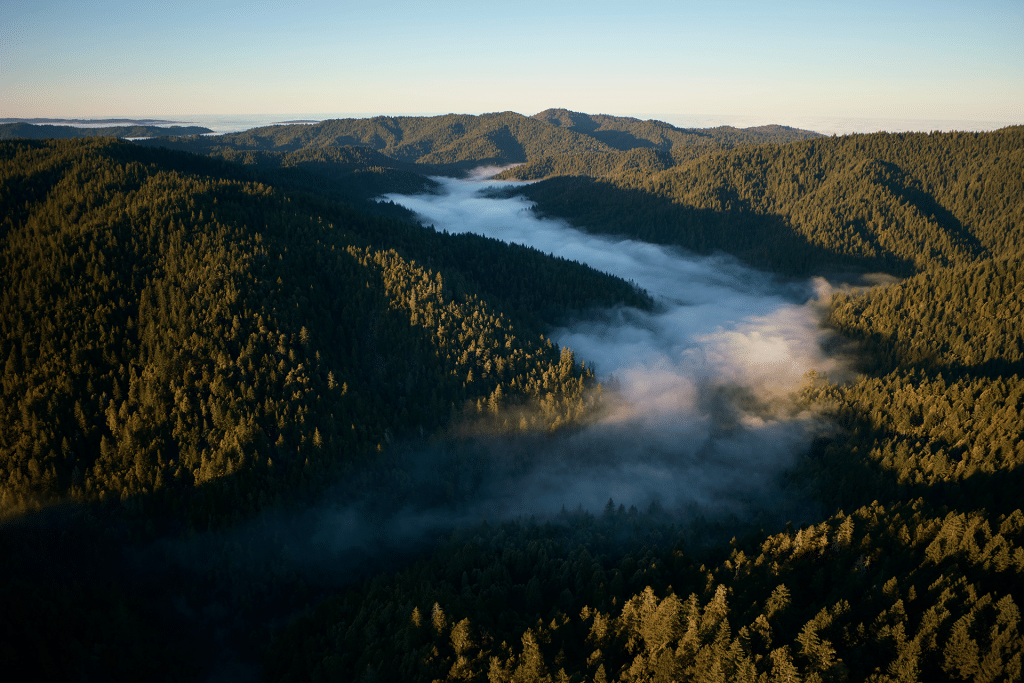California’s redwoods are more than natural landmarks—they are living symbols of resilience and longevity. Many of these trees have stood for centuries, serving as carbon sinks, wildlife habitats, and cultural treasures. Yet decades of logging, wildfires, and climate change have left significant portions of these forests vulnerable. The new restoration project aims to reverse those impacts through large-scale conservation and reforestation efforts.
The work is being carried out in collaboration with local organizations, conservationists, and Indigenous communities, ensuring that the project not only restores ecosystems but also honors the cultural and historical significance of the land. Beyond protecting the environment, the initiative seeks to build stronger connections between people and the natural world.
Video Credit: Apple Inc.
Protecting an Endangered Ecosystem
Redwood forests are among the most biodiverse and ecologically valuable regions in North America. Known for their towering heights and incredible longevity, these trees play a critical role in regulating the planet’s climate by absorbing massive amounts of carbon dioxide. A single mature redwood can store more carbon than almost any other species on Earth, making these forests essential in the fight against global warming.
Over the past century, however, industrial logging and land-use changes have destroyed vast portions of old-growth redwood forests. Today, only a small percentage of these original ecosystems remain intact. While conservation areas and national parks have preserved some groves, many second-growth forests remain fragile and need active restoration to regain their ecological balance.
The new project is designed to address these challenges directly. By planting native species, removing invasive plants, and reintroducing traditional land stewardship practices, conservationists hope to create healthier forests that can withstand fire, drought, and other climate pressures.
A Collaborative Approach to Conservation
What sets this project apart is its emphasis on collaboration. Partnerships with environmental groups and Indigenous communities ensure that restoration efforts are both scientifically sound and culturally informed. Indigenous knowledge has long recognized the interconnectedness of redwoods with surrounding ecosystems, offering valuable insights into sustainable forest management.
Community involvement is also central. Local schools, volunteers, and residents are being invited to participate in tree-planting events and educational programs. By bringing people into the process, the project builds a sense of shared responsibility and ensures that conservation is not just a distant goal but a living, community-driven effort.
Funding and resources are being directed toward long-term monitoring, allowing researchers to track forest health, wildlife populations, and carbon storage over time. This data-driven approach will help refine techniques and share lessons with other conservation efforts across the state and beyond.
Climate Action Through Forest Restoration
Forest restoration is increasingly seen as one of the most effective tools for mitigating climate change, and California’s redwoods are uniquely suited to this role. Their immense size and long lifespan allow them to capture and hold carbon at extraordinary levels, locking away greenhouse gases that would otherwise contribute to warming.
By focusing on redwood ecosystems, the project not only preserves biodiversity but also strengthens California’s resilience against climate impacts. Healthier forests reduce wildfire risks, protect watersheds, and create habitats for endangered species. At the same time, they provide recreational opportunities and cultural value that enrich communities.
Restoration is also a way of giving back to future generations. The redwoods that grow today could stand for centuries, serving as both environmental guardians and living monuments to conservation. Each newly planted grove represents a long-term investment in planetary health, extending benefits far beyond California.
Inspiring Broader Environmental Change
The launch of this redwood forest restoration initiative carries significance beyond its immediate impact. It serves as a model for how technology, conservation, and community engagement can intersect to address urgent ecological challenges. By aligning corporate resources with grassroots efforts, the project demonstrates that large-scale change is possible when different sectors work together.
Environmental leaders see the initiative as a catalyst for other restoration efforts across the country. As climate pressures intensify, forests, wetlands, and grasslands all require similar attention. The success of California’s redwood restoration may encourage more investment in natural climate solutions worldwide.
For individuals, the project is also a reminder of the power of everyday action. Whether through volunteering, supporting conservation organizations, or simply visiting and respecting protected areas, people can play a role in preserving natural heritage. The launch of this initiative underscores the idea that protecting the planet is not only a global challenge but also a shared personal responsibility.
The redwood forest project is more than an environmental campaign—it is a vision for the future. By restoring ecosystems today, it ensures that generations to come can walk among the tallest trees on Earth, experiencing firsthand the awe and inspiration these giants provide.
